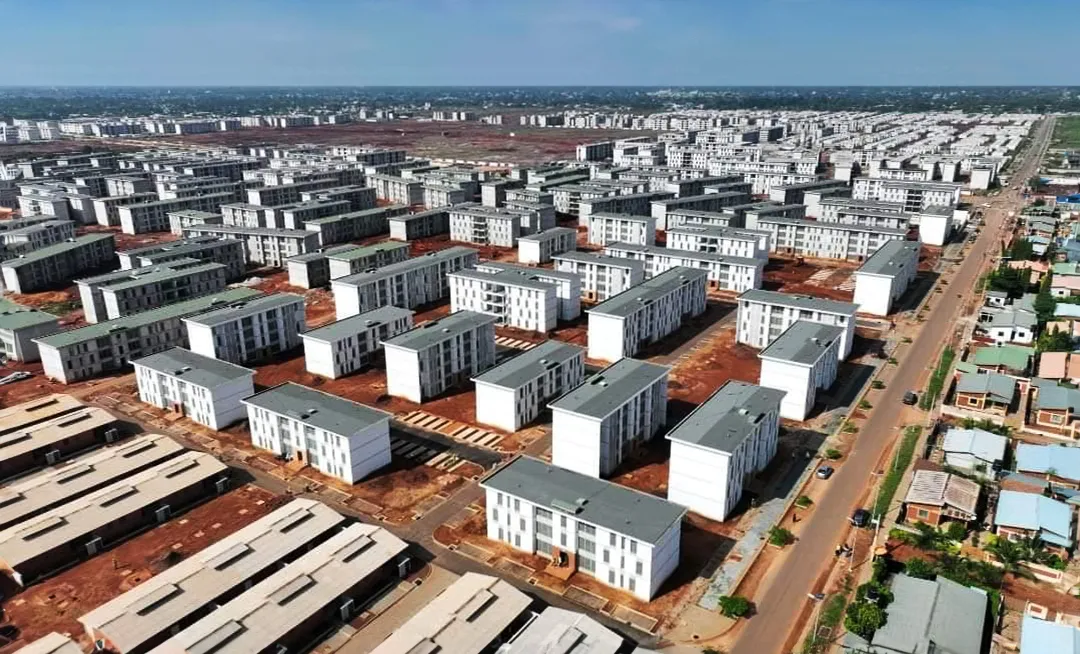Commercial Property In Focus
Commercial property (CRE) is navigating numerous challenges, varying from a looming maturity wall needing much of the sector to refinance at higher rates of interest (typically described as "repricing threat") to a wear and tear in total market basics, including moderating net operating earnings (NOI), increasing jobs and decreasing valuations. This is particularly true for workplace residential or commercial properties, which face extra headwinds from an increase in hybrid and remote work and troubled downtowns. This blog site post offers an overview of the size and structure of the U.S. CRE market, the cyclical headwinds resulting from higher interest rates, and the softening of market principles.
As U.S. banks hold roughly half of all CRE debt, dangers connected to this sector remain an obstacle for the banking system. Particularly amongst banks with high CRE concentrations, there is the capacity for liquidity issues and capital deterioration if and when losses materialize.
Commercial Property Market Overview

According to the Federal Reserve's April 2024 Financial Stability Report (PDF), the U.S. CRE market was valued at $22.5 trillion since the fourth quarter of 2023, making it the fourth-largest property market in the U.S. (following equities, residential property and Treasury securities). CRE financial obligation outstanding was $5.9 trillion as of the 4th quarter of 2023, according to quotes from the CRE data company Trepp.

Banks and thrifts hold the largest share of CRE financial obligation, at 50% since the fourth quarter of 2023. Government-sponsored business (GSEs) account for the next biggest share (17%, mainly multifamily), followed by insurance provider and securitized debt, each with around 12%. Analysis from Trepp Inc. Securitized financial obligation includes business mortgage-backed securities and property investment trusts. The remaining 9% of CRE debt is held by government, pension strategies, finance companies and "other." With such a big share of CRE debt held by banks and thrifts, the possible weaknesses and dangers associated with this sector have actually become top of mind for banking managers.
CRE financing by U.S. banks has actually grown significantly over the past years, increasing from about $1.2 trillion exceptional in the very first quarter of 2014 to roughly $3 trillion exceptional at the end of 2023, according to call report data. A disproportionate share of this growth has happened at regional and community banks, with approximately two-thirds of all CRE loans held by banks with properties under $100 billion.
Looming Maturity Wall and Repricing Risk
According to Trepp price quotes, roughly $1.7 trillion, or nearly 30% of arrearage, is anticipated to develop from 2024 to 2026. This is frequently described as the "maturity wall." CRE debt relies heavily on refinancing; therefore, the majority of this financial obligation is going to require to reprice throughout this time.

Unlike residential property, which has longer maturities and payments that amortize over the life of the loan, CRE loans generally have shorter maturities and balloon payments. At maturity, the borrower generally re-finances the remaining balance instead of settling the lump sum. This structure was helpful for debtors prior to the present rate cycle, as a secular decrease in rate of interest considering that the 1980s implied CRE refinancing generally occurred with lower refinancing costs relative to origination. However, with the sharp increase in interest rates over the last 2 years, this is no longer the case. Borrowers seeking to refinance growing CRE debt might face greater financial obligation payments. While higher financial obligation payments alone weigh on the profitability and practicality of CRE investments, a weakening in underlying principles within the CRE market, especially for the workplace sector, compounds the issue.
Moderating Net Operating Income

One significant basic weighing on the CRE market is NOI, which has actually come under pressure of late, particularly for office residential or commercial properties. While NOI development has moderated across sectors, the workplace sector has actually published outright declines given that 2020, as shown in the figure listed below. The workplace sector faces not only cyclical headwinds from higher rates of interest but also structural difficulties from a reduction in workplace footprints as increased hybrid and remote work has minimized need for workplace.
Growth in Net Operating Income for Commercial Property Properties
NOTE: Data are from the very first quarter of 2018 to the fourth quarter of 2023.
Apartments (i.e., multifamily), on the other hand, experienced a surge in NOI starting in 2021 as rental income skyrocketed with the housing boom that accompanied the healing from the COVID-19 economic crisis. While this attracted more builders to enter the marketplace, an influx of supply has actually moderated rent costs more recently. While leas remain high relative to pre-pandemic levels, any turnaround poses danger to multifamily operating income progressing.

The industrial sector has actually experienced a similar pattern, albeit to a lower extent. The growing popularity of e-commerce increased need for industrial and warehouse space throughout the U.S. in the last few years. Supply surged in reaction and a record variety of storage facility completions pertained to market over just the last couple of years. As a result, asking leas stabilized, contributing to the moderation in commercial NOI in recent quarters.
Higher expenditures have actually also cut into NOI: Recent high inflation has actually raised operating costs, and insurance coverage expenses have increased significantly, particularly in seaside regions.According to a 2023 report from Moody's Analytics (PDF), insurance coverage premiums for CRE residential or commercial properties have actually increased 7.6% annually on average because 2017, with year-over-year boosts reaching as high as 17% in some markets. Overall, any erosion in NOI will have essential ramifications for appraisals.
Rising Vacancy Rates
Building vacancy rates are another metric for evaluating CRE markets. Higher vacancy rates indicate lower occupant demand, which weighs on rental earnings and assessments. The figure below shows current patterns in vacancy rates throughout workplace, multifamily, retail and industrial sectors.
According to CBRE, office vacancy rates reached 19% for the U.S. market since the first quarter of 2024, going beyond previous highs reached throughout the Great Recession and the COVID-19 economic crisis. It ought to be kept in mind that published vacancy rates most likely undervalue the overall level of vacant office, as area that is leased but not completely used or that is subleased risks of turning into jobs as soon as those leases turn up for renewal.
Vacancy Rates for Commercial Real Estate Properties
SOURCE: CBRE Group.
NOTES: The availability rate is revealed for the retail sector as data on the retail job rate are not available. Shaded areas show quarters that experienced an economic downturn. Data are from the first quarter of 2005 to the first quarter of 2024.
Declining Valuations
The combination of elevated market rates, softening NOI and increasing vacancy rates is starting to weigh on CRE assessments. With deals limited through early 2024, rate discovery in these markets stays a difficulty.
Since March 2024, the CoStar Commercial Repeat Sales Index had decreased 20% from its July 2022 peak. Subindexes focused on the multifamily and specifically workplace sectors have fared even worse than general indexes. As of the first quarter of 2024, the CoStar value-weighted business residential or commercial property rate index (CPPI) for the office sector had fallen 34% from its peak in the fourth quarter of 2021, while the CoStar value-weighted CPPI for the multifamily sector declined 22% from highs reached in mid-2022.

Whether general assessments will decline additional remains unsure, as some metrics reveal signs of stabilization and others recommend additional declines may still be ahead. The general decline in the CoStar metric is now broadly in line with a 22% decrease from April 2022 and November 2023 in the Green Street CPPI, an appraisal-based step that tends to lead transactions-based indexes. Through April 2024, the Green Street CPPI has actually been steady near its November 2023 low.
Data on REITs (i.e., property investment trusts) also offer insight on present market views for CRE evaluations. Market sentiment about the CRE workplace sector declined greatly over the last 2 years, with the Bloomberg REIT workplace residential or commercial property index falling 52% from early 2022 through the 3rd quarter of 2023 before stabilizing in the 4th quarter. For contrast, this measure declined 70% from the first quarter of 2007 through the first quarter of 2009, leading the decline in transactions-based metrics however likewise surpassing them, with the CoStar CPPI for office, for example, falling roughly 40% from the 3rd quarter of 2007 through the fourth quarter of 2009.
Meanwhile, market capitalization (cap) rates, determined as a residential or commercial property's NOI divided by its valuation-and for that reason inversely related to valuations-have increased throughout sectors. Yet they are lagging increases in longer-term Treasury yields, potentially due to restricted deals to the level building owners have delayed sales to avoid understanding losses. This suggests that additional pressure on evaluations could happen as sales volumes return and cap rates adjust upward.
Looking Ahead
Challenges in the business property market stay a potential headwind for the U.S. economy in 2024 as a weakening in CRE basics, specifically in the workplace sector, suggests lower evaluations and prospective losses. Banks are preparing for such losses by increasing their allowances for loan losses on CRE portfolios, as kept in mind by the April 2024 Financial Stability Report. In addition, more powerful capital positions by U.S. banks supply added cushion versus such tension. Bank managers have been actively monitoring CRE market conditions and the CRE loan portfolios of the banks they supervise. See this July 2023 post. Nevertheless, tension in the commercial real estate market is likely to remain a crucial danger factor to enjoy in the near term as loans grow, constructing appraisals and sales resume, and cost discovery occurs, which will determine the extent of losses for the marketplace.
Notes
Analysis from Trepp Inc. Securitized financial obligation includes commercial mortgage-backed securities and genuine estate financial investment trusts. The remaining 9% of CRE financial obligation is held by government, pension plans, finance companies and "other.".
1. According to a 2023 report from Moody's Analytics (PDF), insurance premiums for CRE residential or commercial properties have actually increased 7.6% yearly typically considering that 2017, with year-over-year increases reaching as high as 17% in some markets.
2. Bank managers have actually been actively keeping track of CRE market conditions and the CRE loan portfolios of the banks they supervise. See this July 2023 post.
